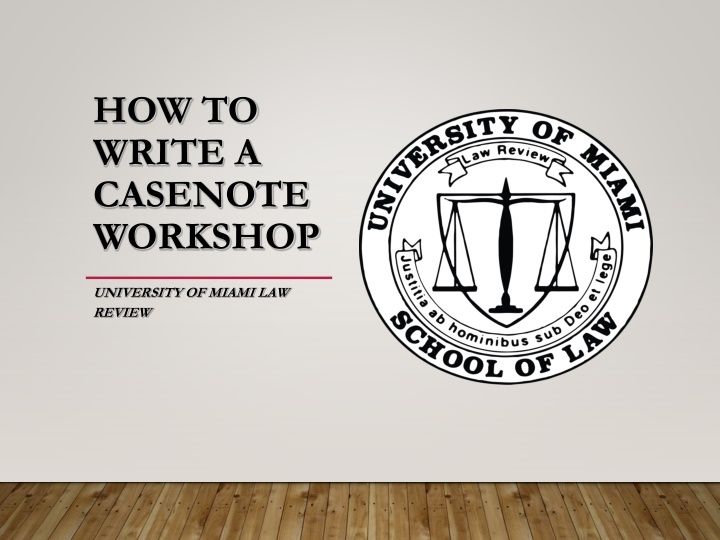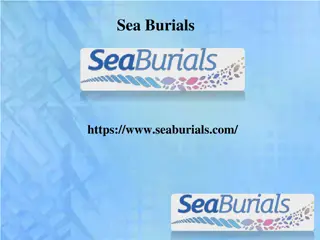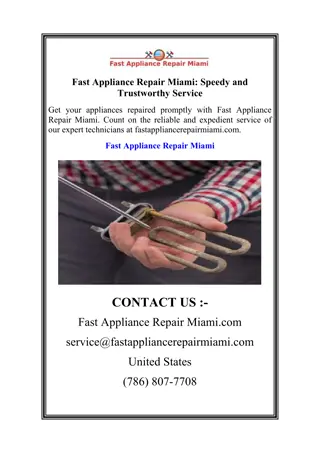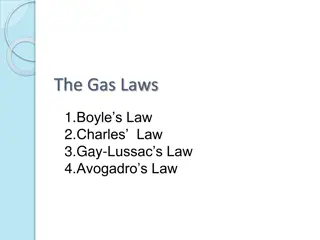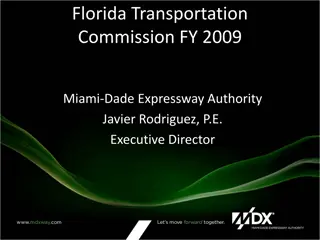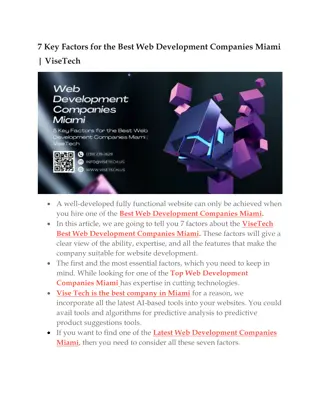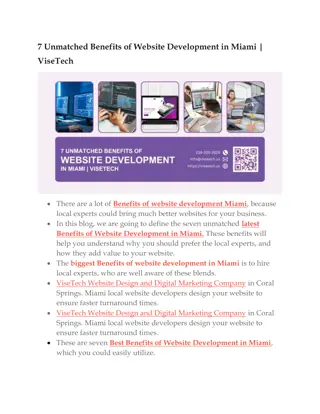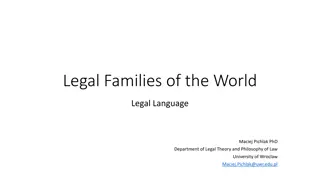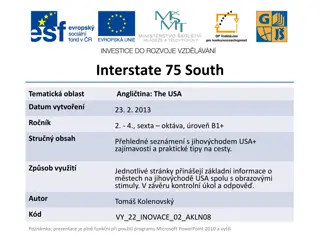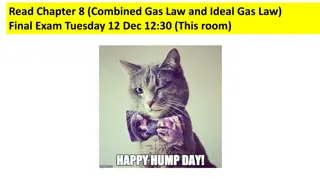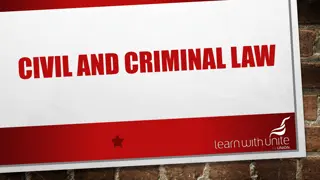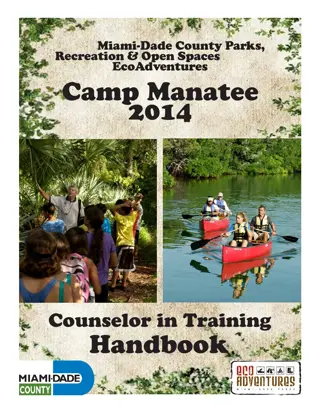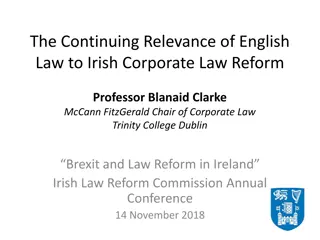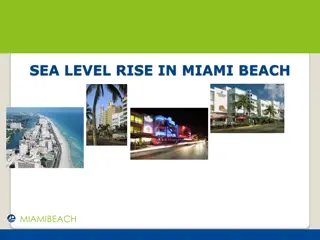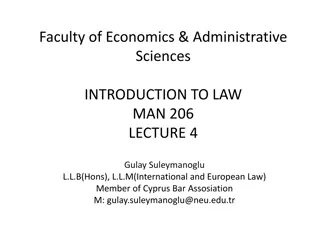Casenote Workshop at University of Miami Law Review
Dive into the essentials of crafting a casenote for legal scholarship with this detailed workshop overview from the University of Miami Law Review. Explore the elements of a casenote, formatting requirements, competition materials, and the sections that comprise a well-rounded analysis of a significant case.
Download Presentation

Please find below an Image/Link to download the presentation.
The content on the website is provided AS IS for your information and personal use only. It may not be sold, licensed, or shared on other websites without obtaining consent from the author.If you encounter any issues during the download, it is possible that the publisher has removed the file from their server.
You are allowed to download the files provided on this website for personal or commercial use, subject to the condition that they are used lawfully. All files are the property of their respective owners.
The content on the website is provided AS IS for your information and personal use only. It may not be sold, licensed, or shared on other websites without obtaining consent from the author.
E N D
Presentation Transcript
HOW TO WRITE A CASENOTE WORKSHOP UNIVERSITY OF MIAMI LAW REVIEW
OVERVIEW OF PRESENTATION What is a Casenote? Elements of a Casenote Honor Code Writing Competition Bluebooking Questions
WHAT IS A CASENOTE? A casenote: Is a scholarly article analyzing a recent, significant case. Is a concise analysis of an opinion. Brings your own perspective to the issue. Contains citations to related cases and important secondary authorities and uses them to support an argument Short Answer = Article/Paper!
FORMAT Text and ENDNOTES double-spaced, justified, and 1-inch margins. 12 pages of text 8 pages of endnotes (starts on separate page from main text) Font: Times New Roman, font size 12 Title, headings, and subheadings are centered Block quotes are single-spaced and indented with 1.5 inches on each side Include page numbers C# in header of each page These formatting guidelines are not optional!! Honor Code certification PDF
COMPETITION MATERIALS Packet Main Case Supporting Materials Law Review Articles; Other Cases; Statutes; etc. Bluebook That s it!
SECTIONS OF A CASENOTE INTRODUCTION Lead Paragraph Background Roadmap PRIOR LAW AND PERSPECTIVE MAIN CASE ANALYSIS CONCLUSION
Lead Paragraph: Engage the reader! I. INTRODUCTION Examples: A sentence, quote, or hypothetical that will pique the reader s interest Background: Paint a broad picture for the paper, setting the stage for what is to come later Identify the basic issues and themes Roadmap: Explain what each part of your paper is going to say
Open with a strong paragraph. Grab the reader s attention. Introduction to what your paper will be introducing the very general theme, issue, etc. A. LEAD PARAGRAPH
B. BACKGROUND Give a brief description of relevant law leading up to the casenote s topic. You will discuss prior law in more depth soon. Put the lead case in perspective. Be specific as to what you are focusing on, while setting out general relevant facts of your case. Preview the recent development and the prior law, while simultaneously identifying the most crucial part of your analysis. Does this development extend the trend or break new ground? Does it clarify the relevant area of law? Is it a new approach to the same problem?
Explain the structure of your entire casenote. o In Part I, this note In Part II this note Make sure your own analysis and conclusions are clearly laid out for the reader. C. ROADMAP It might be helpful to write this at the end. As you write, the way you organize your casenote and your ideas/argument might change.
Set out the legal history leading to the recent development discussed in your casenote. II. PRIOR LAW Identify the important cases, statutes, and secondary sources in the area. Organize by approaches and ideas not by cases. A summary of every single material you have been given is NOT helpful! When discussing case law, discern what is necessary and what is not necessary to your casenote (e.g., procedural posture, critical facts, reasoning, etc.).
Identify significant facts, procedural posture, and parties in detail. III. MAIN CASE Elaborate as to how this case came about and state its impact on prior law. How does this case fit in with the prior law? Briefly describe the majority and, if any, concurring or dissenting opinions in your case.
Here, your creativity and argument emerges. IV. ANALYSIS Take a position on the case/topic! Elaborate as to how your position reverses, extends, or deviates from prior law for example Incorporate other materials in the analysis such as lower court s majority, dissenting opinions, other sources Note any implications & potential criticisms of your argument.
EXAMPLES OF TYPES OF ARGUMENTS FOR ANALYSIS THE COURT PROPERLY APPLIED OR MISAPPLIED PRIOR LAW OR THE STATUTE. THE COURT WAS RIGHT OR WRONG AND FOR SPECIFIC REASONS. THE COURT DID NOT REALLY ACCOMPLISH ANYTHING. WHAT DO YOU THINK THE COURT SHOULD HAVE DONE? WHAT WILL THE COURT DO? (WHERE IT HAS YET TO DECIDE THE CASE).
V. CONCLUSION Give a big-picture perspective. Do not introduce new material or arguments. Flow smoothly from your previous analysis without simply regurgitating it to the reader.
Hannah Gordon, Cowboys and Indians: Settler Colonialism and the Dog Whistle in U.S. Immigration Policy, 74 U. MIAMI L. REV. 520 (2020). Laurence H. Tribe, Death by a Thousand Cuts: Constitutional Wrongs Without Remedies After Wilkie v. Robbins, 2007 CATO SUP. CT. REV. 23 (2007). HELPFUL EXAMPLES OF LEGAL WRITING Frank H. Easterbrook & Daniel R. Fischel, The Proper Role of a Target s Management in Responding to a Tender Offer,94 HARV. L. REV. 1161 (1981). John Hart Ely, The Wages of Crying Wolf: A Comment on Roe v. Wade, 82 YALE L.J. 920 (1973). Samuel D. Warren & Louis D. Brandeis, The Right to Privacy, 4 HARV. L. REV. 193 (1890). To see UMLR s other past publications, go to our website!
THE COMPETITION
Registration LOGISTICS Opens: Monday, 4/17/2023 at 8:00 AM (EST) Closes: Friday, 4/21/2023 at 5:00 PM (EST) Late registrations will NOT be accepted REGISTRATION AND DEADLINES Starts: Wednesday, 5/17/2023 at 8:00 AM (EST) Can pick up printed packet Printed packet cost is $20 Details to follow Everything (registration, submission, etc.) will take place on TWEN. Ends: Wednesday 5/24/2023 at 5:00 PM (EST) No identifying information; only C# No late submissions will be accepted! Announcements of Winners: Monday, 6/26/2023
SURVIVING THE COMPETITION Stress Management Time Management The packet is a lot of material!! Have a plan going in Reading days vs. writing days Outline before you write Leave time to revise Bluebook as you go Exercise, get sleep, eat right! Be creative
UNIV. OF MIAMI SCH. OF LAW HONOR CODE: read the full Honor Code here. 1.01: Purposes and Objectives HONOR CODE: OVERVIEW a. Instilling and perpetuating high standards of ethics and professional conduct among students of the University of Miami School of Law; c. Guarding the School s academic and professional integrity; 1.02: Authority and Guidance c. This Code is binding on the students of the School of Law 1.03: Standards of Conduct a. Cheating (acquiring, obtaining, giving or receiving assistance or information on examinations or assignments ). Using outside materials, not properly citing (which is plagiarizing!), taking with people outside of the compete = Honor Code Violation = Removal from competition b. Plagiarizing (knowingly appropriating another s words or ideas and representing them as one s own). c. Utilizing unauthorized materials, possessing such materials where they could be utilized, or otherwise breaching, in any manner, the instructions of the instructor of the course regarding examinations or assignments . Art. IV: Hearing Process 5.02: Sanctions
HONOR CODE: PLAGIARISM UNIV. OF MIAMI SCH. OF LAW HONOR CODE 1.03B NO PLAGIARISM! You cannot use someone else s work and represent that it is your own. This includes, but is not limited to, the following: Having someone else write your casenote; Having someone else write a portion of your casenote; Copying and pasting from sources without putting the material in quotes; Copying and pasting from anything you found anywhere and not putting the material in quotes and/or paraphrasing; Not giving proper credit to the source where you got information.
When in doubt, cite it out!!!!!! Identify all sources relied upon If a direct quote, use quotation marks If paraphrased or if ideas are substantially derived from a source, identify the source Use SIGNALS when not direct support (like a direct quote). HONOR CODE: PLAGIARISM UNIV. OF MIAMI SCH. OF LAW HONOR CODE 1.03B
NO OUTSIDE ASSISTANCE!: Any outside assistance AT ALL is prohibited. This includes, but is not limited to, assistance from all of the following Any member of any law review; Other students competing in the competition; Other students not competing in the competition; Professors; Bosses; Judges; Paralegals; Moms; Dads; Siblings; Pets; HONOR CODE: COLLABORATION UNIV. OF MIAMI SCH. OF LAW HONOR CODE 1.03 Literally anyone, etc. Disclose close relationships with members of any law review BLR (https://business-law-review.law.miami.edu/about/masthead/) IALR (https://inter-american-law-review.law.miami.edu/masthead/) ICLR (https://repository.law.miami.edu/cgi/viewcontent.cgi?article=1333&context=umi clr) RSJLR (https://race-and-social-justice-review.law.miami.edu/masthead/) UMLR (https://lawreview.law.miami.edu/masthead/) This also means that you cannot read/edit anyone else s casenote or have anyone else read/edit your casenote.
HONOR CODE: UNAUTHORIZED MATERIALS UNIV. OF MIAMI SCH. OF LAW HONOR CODE 1.03C NO OUTSIDE MATERIALS!: You cannot use, cite, review, read, discuss, etc. any sources or materials that we have not provided to you in the materials packet. The materials packet will be between 300 500 pages. You can only cite to materials included in the packet. If you use outside materials (besides the Bluebook) you will be REMOVED FROM THE COMPETITION You cannot discuss any other materials that are not in the packet unless what you are discussing is common knowledge. If you have any questions about this rule during the Competition, please reach out to Farah Barquero and she will assist you.
HONOR CODE: ZERO TOLERANCE POLICY UNIV. OF MIAMI SCH. OF LAW HONOR CODE art. IV Hearing Process If you are accused of violating the Honor Code, you will have to go through a long, stressful hearing process that is modeled after an actual trial proceeding; It includes pre-trial hearings, discovery, evidence, testimony, etc. UNIV. OF MIAMI SCH. OF LAW HONOR CODE 5.02 Sanctions All of the following are possible consequences for violating the Honor Code during the Writing Competition: Informal or formal warning; Private reprimand, including a letter for the student s permanent school file, and/or notice to student organizations ; Public reprimand; University service; Disciplinary probation; Suspension or loss of specific Law School benefits, privileges, memberships, and or honors, including financial aid and scholarships; Suspension from the School of Law with or without a refund of tuition; and Expulsion from the School of Law with or without a refund of tuition
HONOR COUNCIL'S 5 TIPS FOR THE WRITING COMPETITION
BLUEBOOKING: OVERVIEW For purposes of the writing competition, Bluebooking can count for as much as one-fourth of your score. Strong Bluebooking is crucial for the law review editing process. We are evaluating how you Bluebook. The Bluebook has an online version available by yearly subscription. Visit legalbluebook.com if interested. Use the index or search box. Use the white pages, not the blue pages. Endnotes only, footnote rules apply.
Remember the Five Footnote Rule (R4.1) NEVER supra to a case, statute, constitution, legislative materials, regulations, model codes, or restatements (R4.2) Remember to use the appropriate abbreviations Case names/institutional authors (T6) Periodical names (T13, T10) Dates/months (T12) Remember to use Rule 8 capitalization. BLUEBOOKING: QUICK TIPS Remember to use the appropriate signals! (R1) Remember to use the appropriate typeface for textual materials and citations (R2) **Case names are not italicized in full cites (R10). If it is available, cite to the U.S. Reporter (U.S.) for cases, not the Supreme Court Reporter (S. Ct.) (T1) Purchase the online version of the Bluebook if the physical Bluebook is too cumbersome for you. You get a free year of the online bluebook if you look through the first few pages of your physical Bluebook.
BLUEBOOKING: CASES (FULL CITES IN ENDNOTES) Example: United Housing Foundation, Inc., et al. v. Forman et al., 421 U.S. 837, 837 (1975). Note: NO ITALICS in the case name. o General: Rule 10.1 4 Basic Elements: Party Names: Rule 10.2 o Reporter: Rule 10.3 and T.1 o Year: Rule 10.5 o Short Cites: Rule 10.9 o
BLUEBOOKING: CASES Distinguishing Party Names in Text and in Citations: o Used As Text (Rule 10.2): In United Housing Foundation, Inc. v. Forman,the Court held that . . . Only abbreviate according to Rule 10.2.1(c) (p. 98). o Full Citation in Endnotes (Rule 10.2):United Hous. Found., Inc. v. Forman, 421 U.S. 837, 837 (1975). Remember to abbreviate according to T.6 (p. 496).
BLUEBOOKING: CASES (SHORT CITES) Short Citation in Endnotes (Rule 10.9): United Hous. Found., 421 U.S. at 844. o Note: Case name in italics. Short Cites (Rule 10.9) The Five Footnote/Endnote Rule: If a case is cited within the five preceding endnotes, you can short cite. This includes id., meaning you can have as many id. s as you want. o This includes any citation in a parenthetical. However, you may not use id. for a cite in a parenthetical. o
BLUEBOOKING: CASES Example: Thompson v. Byers, 555 U.S. 987, 999 (2008) (quoting McGuane v. Fitzgibbons, 400 U.S. 22, 28 (1975)). An id. may not be used for McGuane v. Fitzgibbons. McGuane v. Fitzgibbons may be short cited within the next five endnotes. However, an id. may be used for Thompson v. Byers. Supra is NEVER appropriate for a case or statute.
BLUEBOOKING: LAW REVIEW ARTICLES (FULL CITE) Author s Full Name in Ordinary Roman, Name of the Article in Italics, 23 L. REV. IN SMALL CAPS 122, 125 (2013). Rule 16 (p. 159) Author s name as it appears in article. Title, capitalized according to Rule 8, but not abbreviating or omitting words. The 23 here is the volume number; the 122 here is the page on which the article begins; the 125 is the pincite. A pincite is the exact page the material is found on. Everything should have a pincite The name of the law review or journal should be abbreviated according to T. 10 and T.13. The year goes in parentheses.
BLUEBOOKING: LAW REVIEW ARTICLES (FULL CITE) Example: Robert C. Ellickson, Of Coase and Cattle: Dispute Resolution Among Neighbors in Shasta County, 38 STAN. L. REV. 623, 633 (1986). Include the C in Robert C. Ellickson if the author maintained it. If the title was Of Coase & Cattle, you should keep the &. The title should appear as it appears in the article. Include the subtitle. Stanford Law Review abbreviated as shown in T.13. The name of the publication should appear in large and small capitals according to Rule 16. Page 633 is the pincite to the article. Everything you cite should have a pincite which is an exact page number referenced Page 623 is the first page of the article
BLUEBOOKING: LAW REVIEW ARTICLES (FULL CITE) The full citation of the law review article only should be cited to one time. Every other time use supra Full cite: Robert C. Ellickson, Of Coase and Cattle: Dispute Resolution Among Neighbors in Shasta County, 38 STAN. L. REV 623, 633 (1986). Short Cite: Ellickson, supra note X, at 633. Author s Last Name in Ordinary Roman, supra note #, at page number. Rule 4 Author s last name as it appears in article supra note # # will be the endnote number where you cite the full law review article Pro tip: do this at the end because it will likely change as you edit your paper Pincite to the page number of the article.
BLUEBOOKING: SUPRA Use supra to refer back to material that has already been fully cited unless id. is appropriate (it was the citation right before) or supra is inappropriate for the authority under Rule 4.2. Under Rule 4.2, do not use supra to refer to authorities such as cases, statutes, constitutions, restatements, model codes, or regulations. For other sources, supra generally may be used (seethe rule for an exhaustive list). The supra form generally consists of the last name of the author of the work, followed by a comma, the word supra and the endnote in which the full citation can be found, followed by the pincite (if applicable). Example: Williams, supra note 18, at 6.
BLUEBOOKING: INFRA Use infra to refer to material that appears later in the piece (Rule 3.5) Examples: See discussion infra Sections II.B.2, III.C.1. Seeinfra pp. 106 07. Seeinfra notes 100 10 and accompanying text.
BLUEBOOKING: HEREINAFTER Use hereinafter to refer to material that would be cumbersome to cite solely according to traditional short citations or supras (Rule 4.2). Examples: FULL CITE: Proposed Amendments to the Federal Rules of Criminal Procedure: Hearings Before the Subcomm. on Criminal Justice of the H. Comm. on the Judiciary, 95th Cong. 92 93 (1977) [hereinafter Hearings] (statement of Prof. Wayne LaFave). SHORT CITE: Hearings, supra note 95, at 12.
BLUEBOOKING: NEWSPAPERS Example: Michael Bluth, Banana Stand Burns Down,ORANGE COUNTY TRIB., Oct. 30, 2000, at A1. Rule 16.6 (p. 163). Author s name, as it appears in the article. Article title as it appears in italics. Tribune shortened to Trib. according to T.13. The name of the publication is in large and small capitals according to Rule 16.1. Date abbreviated according to T.12. The start page of the article, with an at in front. Do not pincite to newspaper articles.
BLUEBOOKING: INTERNET SOURCES Rule 18 Articles and Blogs only available on the internet follow Rule 18.2.2: Douglas Gantenbein, Mad Cows Come Home, SLATE (Jan 5, 2004, 12:10 PM), http://www.slate.com/id/2093396/index.html. Weird and Dumb International Law, JUSTICEDAILY.COM, http://www.justicedaily.com/weird/part2.html (last visited May 21, 2004). Pay attention to the location of the date in the cite!
BLUEBOOKING: INTRODUCTORY SIGNALS Rule 1.2 [No signal] if cited authority: Directly states proposition, i.e. direct quote; IDs source of quotation; or IDs authority referred to in the text. E.g., if cited authority states proposition and other authorities do as well, but citation to those authorities is not helpful. Accord when two or more sources state or support a proposition, but the text only quotes/refers to one; the other sources are introduced by accord.
BLUEBOOKING: SIGNALS See when cited authority supports the proposition. Used instead of [no signal] when the proposition is not directly stated by the cited authority, but obviously follows from it. Use see also when cited authority constitutes additional source material supporting the proposition. Cf. when cited authority supports a proposition different from the main proposition, but sufficiently analogous to lend support. Literally, cf. means compare. Parenthetical explanations are recommended to clarify relevance to the reader.
BLUEBOOKING: CONTRADICTORY SIGNALS Contra when cited authority states directly the contrary of the proposition. But see when cited authority clearly supports a proposition contrary to the main proposition. But cf. when cited authority supports a proposition analogous to the contrary of the main proposition. Explanatory parenthetical strongly recommended.
BLUEBOOKING: SIGNALS INDICATING BACKGROUND & USEFUL COMPARISONS See generally when cited authority presents helpful background material related to the proposition. Explanatory parenthetical is highly encouraged. Compare X and Y with Z. Comparison of the authorities will offer support or illustrate the proposition. An explanatory parenthetical following each authority is highly recommended.
